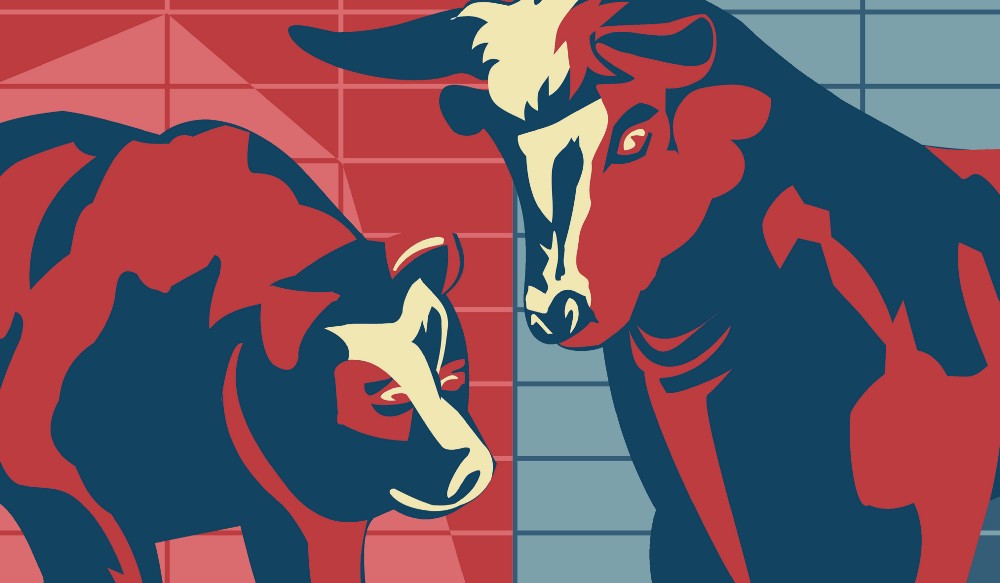TLDR:
- Cardano has survived the bear market between 2017 and 2021. In the next bull market, Cardano will celebrate 10 years of existence. The Lyndy effect will be quite strong.
- Just as the bursting of the dot-com bubble had a cleansing effect on internet services, bear markets in the cryptocurrency space are filtering out promising projects from the rest.
- Market cycles do not affect the IOG team’s efforts and adoption of Cardano.
- Cardano is stronger in this bear market because you can build applications on it. Additionally, we are going to see many enhancements like Input Endorsers, Hydra launch, Lace wallet with integration to Atala PRISM (decentralized identity), Djed stablecoin, and more.
- Never try to judge a project’s future potential by its current market capitalization in an ongoing bear market.
- The IOG team will be constantly improving Cardano, so it will be very difficult for competitors to catch up with the development and deliver something significantly better.
- A blockchain project that fails to deliver utility is not sustainable in the long term and its relevance will fade with the interest in speculating on value growth.
- Banks are not worried about the monetary policy of individual blockchain projects, but the technology itself. A globally available network capable of transmitting P2P value and building services on top of it is a threat to them.
- The Internet has changed many industries, and it is to be expected that if the Internet changes with the advent of blockchain technology, it will also affect the companies that use the Internet.
- To be a relevant alternative to banking services, the blockchain industry must be able to replicate mainstream financial services. This means that they must be able to provide interest on user deposits.
- Blockchain networks of the future aren’t going to be defined by first to market or fastest to get network effect. They are always going to be defined by best under stress and most durable.
A look into the past
The halving event of Bitcoin defines market cycles in the cryptocurrency world. The year following the year in which the halving event occurs, we can usually expect all relevant projects to reach ATH. New ATHs are usually reached at the end of the year. This is followed by a multi-year bear market. With Bitcoin halving approaching, the market capitalizations of projects will start to grow again. Four-year cycles are not very rational and can be expected to end once higher adoption is achieved.
The previous Bitcoin halving occurred in 2016. ADA coins get to the open market in 2017. It was the year when projects like Bitcoin, Ethereum, and even Cardano reached ATH in the given cycle. A bear market of several years followed between the years 2017 and 2021. The last halving took place in 2020 and as usual, the new ATHs of many projects were reached in 2021. We are now in a bear market. If everything continues as before, which can never be certain, the downturn may last until 2024/2025.
The cryptocurrency market has begun to copy the stock market (especially S&P 500 and Nasdaq), so it is possible that if the financial crisis ends, four-year cycles will be broken. At the moment, nothing is certain.
It is important to note that in addition to Bitcoin’s halving, the current market sentiment is influenced by the negative economic outlook across the globe. Inflation is rising in almost every country in the world and many are starting to face recession. All technology stocks are falling in value. Cryptocurrencies are perceived as technology, so it’s not surprising that the value of cryptocurrencies is falling as well.
After 2017, literally hundreds of projects disappeared. Only a few survived, including Cardano. Why did Cardano manage to survive?
Many fraudulent projects raised money in ICOs in 2017 and the team had no plans to build and deliver anything new. People used ICOs to enrich themselves. Many teams may have wanted to deliver their solutions but ran out of funding due to falling cryptocurrency values. Some projects were not completed or came to the market at the wrong time, so there was no interest in them.
Sometimes people tend to see all projects the same and not see the differences. However, this is a big mistake. 99% of the projects may have been a scam from the start, but that doesn’t mean there can’t be a project that is different from the rest. A bear market naturally cleanses the market. If a project survives, it means it has done something worthwhile. Cardano survived the bear market.
It is important to note that it is no coincidence that Cardano survived and the reasons are obvious. The IOG team had a sufficient budget to fund technology development and had a plan to deliver. The team defined a mission for the project that is clear and perceived as a benefit to society. The team communicated and reported transparently on the results of their work. Cardano Summits were held. The community was growing. The team worked successfully on adoption.
The bursting of the dot-com bubble and the Lyndy effect
The ICO mania of 2017 and the subsequent demise of a large number of projects are reminiscent of the bursting of the dot-com bubble. The dot-com bubble is the name given to the period from 1996 to 2001 when Internet usage increased massively. During this period, internet companies boomed and then collapsed. The Nasdaq stock market index, under which many Internet companies were listed, peaked in 2000 before collapsing. The bubble burst. During this crash, many online shopping and communications companies failed and went out of business. For example, companies such as Pets-dot-com, Webvan and Boo-dot-com, Worldcom, and many others. While other companies saw their stock plummet and lost much of their market capitalization, they survived. These companies include Cisco and Qualcomm. Other companies, such as eBay and Amazon-dot-com, lost value but recovered quickly.
Bear markets can have a salutary effect by separating relevant projects from a large number of low-potential projects. If a project survives a bear market, it is evidence of the project’s viability and its chances of success increase dramatically.
The Lindy effect is a theorized phenomenon by which the future life expectancy of some non-perishable things, like a technology or an idea, is proportional to their current age. Thus, the Lindy effect proposes the longer a period something has survived to exist or be used in the present, it is also likely to have a longer remaining life expectancy. Longevity implies a resistance to change, obsolescence, or competition and greater odds of continued existence into the future. Where the Lindy effect applies, the mortality rate decreases with time.
Cardano gets stronger with every year of its existence and even stronger with every bear market it survives. Although Cardano has been building since 2014/2015, few people became aware of it in 2017. In a bear market, not many people are interested in cryptocurrencies. Even though the community grew in the bear market, it’s very likely that most took notice of Cardano sometime in 2020. The PoS deployment, the Africa Special event, or something else could have helped. We can conclude that for a large portion of supporters, Cardano is still a very young project.
At what stage are we now
In the current bear market, it is even more obvious that Cardano is a relevant project. Cardano is still one of the most developed projects thanks to a huge team. Every month, fans can look at Cardano 360 and see the technological progress. Tens of thousands of people follow the updates on YouTube. A growing number of teams are registering their ideas in Catalyst and more people are voting each round. Adoption at the state and the corporate level continues successfully.
In a bear market, media interest in smaller projects and cryptocurrencies, in general, may wane. However, this does not mean that nothing is happening. Market cycles do not affect the IOG team's efforts and adoption of Cardano. The rising value of coins usually attracts the attention of speculators. However, Cardano as a platform does not need them as much as real users.
This bear market differs from the last one in that new apps can be built on Cardano. Third-party developers can build their solutions and deploy them. Hundreds of teams are working on something new. Catalyst will help fund new ideas and the community decides what projects to fund.
It is possible to issue tokens and NFTs. We have decentralized exchanges and it is possible to build new DeFi services. We will see an algorithmic stablecoin Djed. The first version of the second layer called Hydra will be deployed soon. The IOG team will ship a new lightweight wallet, Lace, which will offer the ability to create your own decentralized identity via Atala PRISM. Interesting side-chains are being developed. This is all happening in the ongoing bear market.
Never try to judge a project’s future potential by its current market capitalization in an ongoing bear market. It makes no sense. You have to accept the current global market sentiment and realize that even the best project has no chance of growing during a financial crisis. It is important to look ahead and think about what will happen after the crisis is over.
Cardano will still be here around 2024 and it will get stronger. In the next bull market, Cardano will celebrate 10 years of existence. By that time, Cardano will be scaling significantly better on the first layer, as this is now a priority for the team. Input endorsers technology will be a big step forward for the entire cryptocurrency space and Cardano will be one of the leaders when it comes to innovation. The community will very likely continue to grow and Cardano will win every poll. We can expect success in adoption from companies and countries. I don’t see much reason why it should be otherwise.
Sometimes we come across the opinion that there will be completely new projects that will overshadow the current ones and that there will be completely different projects in the top 10. That can happen, of course, but we don’t think so. There will certainly be a few new projects with a strong team and good funding, but there won’t be dozens of them. It takes a relatively long time, on the order of several years, to build a new protocol that is not a mere copy of the current ones. Once smart contracts can be used by third-party developers, it takes another few years for developers to learn how to use the platform and build secure services.
Currently, there are only a few relevant smart contract platforms in the cryptocurrency space. The IOG team will be constantly improving Cardano, so it will be very difficult for competitors to catch up with the development and deliver something significantly better. DeFi may literally explode on Cardano during the next bull market. The teams of completely new projects will likely build their protocol consensus. Cardano will very likely stay in the top 10.
During the last bull market, many PoW projects left the top 10 and will never return. Most of them were copies that did not bring any innovation. It turns out that once the speculative sentiment dies down, the project gradually fades into history.
The long-term sustainability of the protocol cannot be based on speculation or faith but on real utility. Users will only adopt useful services that offer them clear advantages over current solutions. Only the adoption and growth of the network effect can ensure the prosperity of public protocols.
A broader perspective
Do you think stocks are a store of value? Apple shares have been trading since 1982, so almost 40 years. At the very beginning, they were worth about $0.05. At the time of writing, just under $150. You would find plenty of similar stocks in the market. Do you think the value could have risen for 40 years just based on speculation or traders’ beliefs? We can almost certainly conclude that it couldn’t. When investors look for reasons to buy a particular stock, they always look at what the company produces and what it is useful to the world. All large Internet companies are successful because of a strong network effect. The network effect only grows if there is demand for specific services.
We know Google for information retrieval. Facebook and Twitter are global social networks. Apple ships popular mobile phones all over the world. Each giant has dominated a specific sector. In some places, companies bump into each other and compete. The important point is that as long as companies are successful and the majority of the population uses their services, the stocks of these companies will serve as a good store of value.
Can cryptocurrencies be a good store of value? We believe so, but only if they deliver a useful service to the world that is globally adopted.
A blockchain project that fails to deliver utility is not sustainable in the long term and its relevance will fade with the interest in speculating on value growth. It may well be that Bitcoin is such a large phenomenon that the speculative nature is enough to sustain value. Relying on it can be tricky. No one knows this, as blockchain technologies are brand new unprecedented technologies. Anyway, no project other than Bitcoin can rely on faith and must deliver quality technology that will be in demand.
If we want to find out if Cardano will be relevant in 10–20 years, we must, first of all, ask if there will be demand for the technologies being developed. Secondly, we should be interested in the competition. In this article, we will focus only on technology.
The reality is that commercial banks are not afraid of Bitcoin. Some even allow their customers to buy cryptocurrency. It’s another asset for them to capitalize on through their customer service. Many people do not want to hold cryptocurrencies and prefer to entrust this service to a third party. Unclear regulations prevent banks from offering cryptocurrency-related services on a larger scale.
The world’s IT giants have a huge user base and have a lot of information about their users. If they tried to expand their business into finance, as Facebook has tried to do with Libra/Diem, it would be significant competition for banks. The introduction of CBDC is another real threat to commercial banks.
Bankers and other experts are watching the development of cryptocurrencies and are more worried about the technology itself than the monetary policy features of individual projects. What is interesting for banks and other finance-related businesses are globally available transaction networks that can transfer values in a Peer-to-Peer fashion, the ability to issue tokens and stablecoins, and smart contracts that allow building services on top of that.
Today, information can circulate around the world literally in a second. However, in the case of sending value, this would not be the case if blockchain technology did not exist. With blockchain, you can send value from the US to Europe, Asia, or Africa through one ecosystem. There is no need for two or more entities to agree on a transaction. The ability to send value anywhere in the world in a short while and for a low fee is a huge step forward. It is important to note that at the moment no blockchain network scales sufficiently, so this option only works to a limited extent. Further technological advances will enable this kind of interconnection.
Another huge innovation is the ability to hold value without an intermediary. All custody services will be automated and there will be no need for inefficient middlemen. If people get used to being responsible for their wealth, they will essentially stop needing bank accounts. As we wrote above, some people will not want to be their own bank and will be happy to use similar services. Banks can take advantage of this.
Greater connectivity of people through an independent network together with a decentralized identity will enable the creation of alternative financial services. Lending, one of the major businesses of banks, will be disrupted and smart contracts can fully automate many processes. However, banks may still offer assistance services.
Banks and new FinTech services will probably start using blockchain. It seems inevitable. Cardano is being built so that secure applications can be built on top of it. The software used by banks must meet high-quality standards and many use Haskell, the same programming language used to write Plutus scripts. It is difficult to predict what impact blockchain technology will have on commercial banks, as CBDC and IT giants may also play a significant role. In any case, banks can be expected to start using public blockchain networks sooner or later, and Cardano may appeal to them.
Everything may be different and it is possible that banks will not start using blockchain networks. In that case, new FinTech services that rely on blockchain may be successful. Some form of disruption will certainly occur, it is just hard to predict what it will ultimately look like.
Many companies can use the global network for their business. The potential is almost endless. Web3 can change the fundamental principles of the Internet as we know it today. The Internet has changed many industries, and it is to be expected that if the Internet changes, it will also affect the companies that use the Internet. New technologies open up new possibilities of use and sooner or later someone will take advantage of them.
Adoption of the Cardano network will be significantly faster through the current big players in the market using it. The cryptocurrency industry has not yet been able to deliver a globally used DeFi service that is massively popular. This can be attributed to unreliability, poor marketing, low scalability, and complexity of use. Large companies can change this and can integrate blockchain networks into their current solutions. Twitter has already integrated the use of NFT. Facebook is also experimenting with NFT. It’s only a matter of time before we see more integration.
The world of finance will change in the next decade and the current financial crisis may be the initiator of more widespread change. It will depend on how big the crisis is and what we want to change. Almost everyone is talking about the use of blockchain today. Adoption may be slower than we initially hoped, but it is continuing, which is important.
People expect more from cryptocurrencies
The fall of projects like Celsius or Terra Luna says a lot about cryptocurrencies. Many people don’t want to just hold cryptocurrencies in their wallets and wait another 10 years for the value to possibly rise. Many people want to use their assets in some way. For example, as collateral or to provide passive income. People are naturally greedy and have little patience. That’s one reason they entrust their coins to centralized intermediaries. Natural human behavior is hard to change and it is okay for people to want to profit. The demand for platforms offering interest on deposits is clear. The question arises. Can such a platform be created on a decentralized basis?
To be a relevant alternative to banking services, the blockchain industry must be able to replicate mainstream financial services. This means that they must be able to provide interest on user deposits. People commonly use this option in the case of fiat currencies. The blockchain industry must also allow this in a decentralized form with cryptocurrencies. Decentralization as a concept will lose if people are forced to entrust cryptocurrencies to centralized entities for the sake of deposit interest.
Imagine if we wanted to build a decentralized world, but lending, one of the basic financial services, would continue to operate only on a centralized base. It would mean that banks would still have control over your money and personal data. States could order the bank to freeze your account.
It doesn’t make sense to entrust cryptocurrencies to a centralized entity that will then use them as liquidity in DeFi services. Users can do the same from their own wallets. However, this is exactly what Celsius did. Celsius seems to have been a useless and unreliable proxy. If Celsius advised people for a modest fee which DeFi service to provide liquidity, people would still have control over their funds.
So here we have a demand for a service that people are very likely to want to use. The service would be useful and the network effect would be expected to grow rapidly. This is exactly the form of utility that we have been talking about. If such a DeFi service is implemented on Cardano, the platform will be useful and valuable as well.
People sometimes mistakenly think that if a project with a certain network effect already exists then the lead cannot be caught up. The entire crypto market is still relatively small and adoption is low. The overall market capitalization is based on speculation more than the utility. Blockchain networks of the future aren’t going to be defined by first to market or fastest to get network effect. They are always going to be defined by best under stress and most durable.
We will see projects that appear and disappear again after a while because something bad happens during a market downturn. Just as we are seeing in the current bear market. Long-term vision and insistence on building quality and reliable technology are necessary prerequisites for any project to remain relevant for decades. A systematic and measured way using proper protocol design, peer review, and the application of formal methods will lead to success. Trying to be first to market with protocols that fail shortly after launch will only lead to daily dramas and loss of wealth.
People expect cryptocurrencies to be a reliable and well-functioning alternative to the financial world. Businesses expect a scalable and secure global network that they can rely on to expand their business. Banks will only hold cryptocurrencies in the first phase. In the next phase, they will start using them for their business. New alternative banks will emerge that make more use of decentralized networks than traditional technologies.
Conclusion
Only strong projects that continue to develop technology, work towards wider adoption and build community will survive the bear market. We have no doubt that Cardano will survive and become an integral part of the cryptocurrency scene. Cardano combines the best features of Bitcoin and Ethereum. Using an Extended-UTXO that was inspired accounting model of Bitcoin. Cardano’s PoS is built on Nakamoto's consensus. Decentralized exchanges have been launched on Cardano, which no one has managed to hack so far. Many teams will be building their projects on Cardano during the bear market. Adoption in developing countries will continue. Every bear market will come to an end at some point. Survival will make Cardano an even stronger project.
Source: Cardano survives the bear market

 Myth-busting: the physical world is not a problem for Cardano
Myth-busting: the physical world is not a problem for Cardano What Vasil upgrade brings to Cardano
What Vasil upgrade brings to Cardano How Ouroboros Leios will change the Cardano Consensus
How Ouroboros Leios will change the Cardano Consensus Let's talk about the realistic market capitalization of Cardano
Let's talk about the realistic market capitalization of Cardano